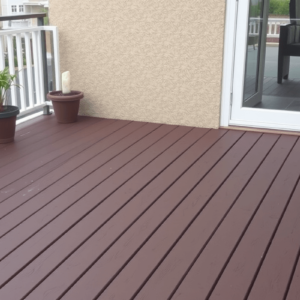Comparative Analysis: Traditional vs Composite Fencing and Decking
Introduction
In recent years, homeowners have become increasingly concerned with the longevity, aesthetics, cost, and maintenance of their outdoor structures, particularly when it comes to fencing and decking. Two primary materials dominate this market: traditional wood and composite materials. This article will provide a detailed comparative analysis of these two options, aiming to help readers make an informed decision based on their specific needs.
Longevity
When considering longevity, composite materials generally outperform traditional wood. According to a study by the National Institute of Building Sciences, composite materials are more resistant to weathering and decay, lasting up to three times longer than wood under similar conditions (NIBS). Traditional wood, while initially strong, can degrade over time due to exposure to moisture, sunlight, and pests. Composite materials, made from a blend of recycled plastics and wood fibers, are designed to withstand harsh weather conditions, thereby extending the lifespan of the fence or deck.
Aesthetics
Both traditional wood and composite materials offer a range of aesthetic choices. However, traditional wood provides a natural look that many homeowners prefer. It can be stained or painted to match any decor, giving homeowners the flexibility to customize their outdoor spaces. Composite materials, on the other hand, often come in a limited range of colors and textures. While they may not offer the same level of customization, composites do maintain their appearance over time without fading or peeling, which is a significant advantage in terms of long-term aesthetics (Home Depot).
Cost
Cost is another critical factor in choosing between traditional wood and composite materials. Initially, traditional wood is typically less expensive than composite materials. However, the total cost of ownership should also consider the long-term expenses associated with maintenance and replacement. Composite materials require less maintenance and last longer, which can offset the higher initial investment. A study by the American Housing Survey indicates that the overall cost of ownership for composite materials can be lower over time compared to traditional wood (AHS).
Maintenance Requirements
Maintenance requirements differ significantly between traditional wood and composite materials. Traditional wood fences and decks require regular painting or staining to protect against moisture and UV damage. They also need periodic inspections for signs of rot, insect infestation, and other forms of deterioration. Composite materials, however, are much easier to maintain. They do not require painting or staining, and minor repairs can be done using specialized tools. The durability of composite materials means that they retain their appearance with minimal effort, making them an attractive choice for those looking to minimize ongoing upkeep (Family Handyman).
Conclusion
Choosing between traditional wood and composite materials for your fencing and decking projects depends on your priorities regarding longevity, aesthetics, cost, and maintenance. While traditional wood offers a natural beauty and lower initial costs, composite materials provide superior durability, ease of maintenance, and consistent aesthetics over time. By understanding these differences, you can make an informed decision that best suits your needs and enhances your outdoor living space.
Reference
National Institute of Building Sciences (NIBS)
Home Depot
American Housing Survey (AHS)
Family Handyman





Reviews
There are no reviews yet.